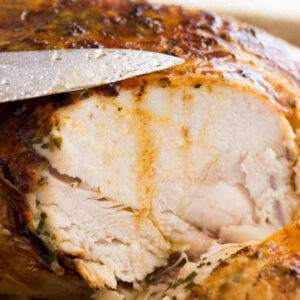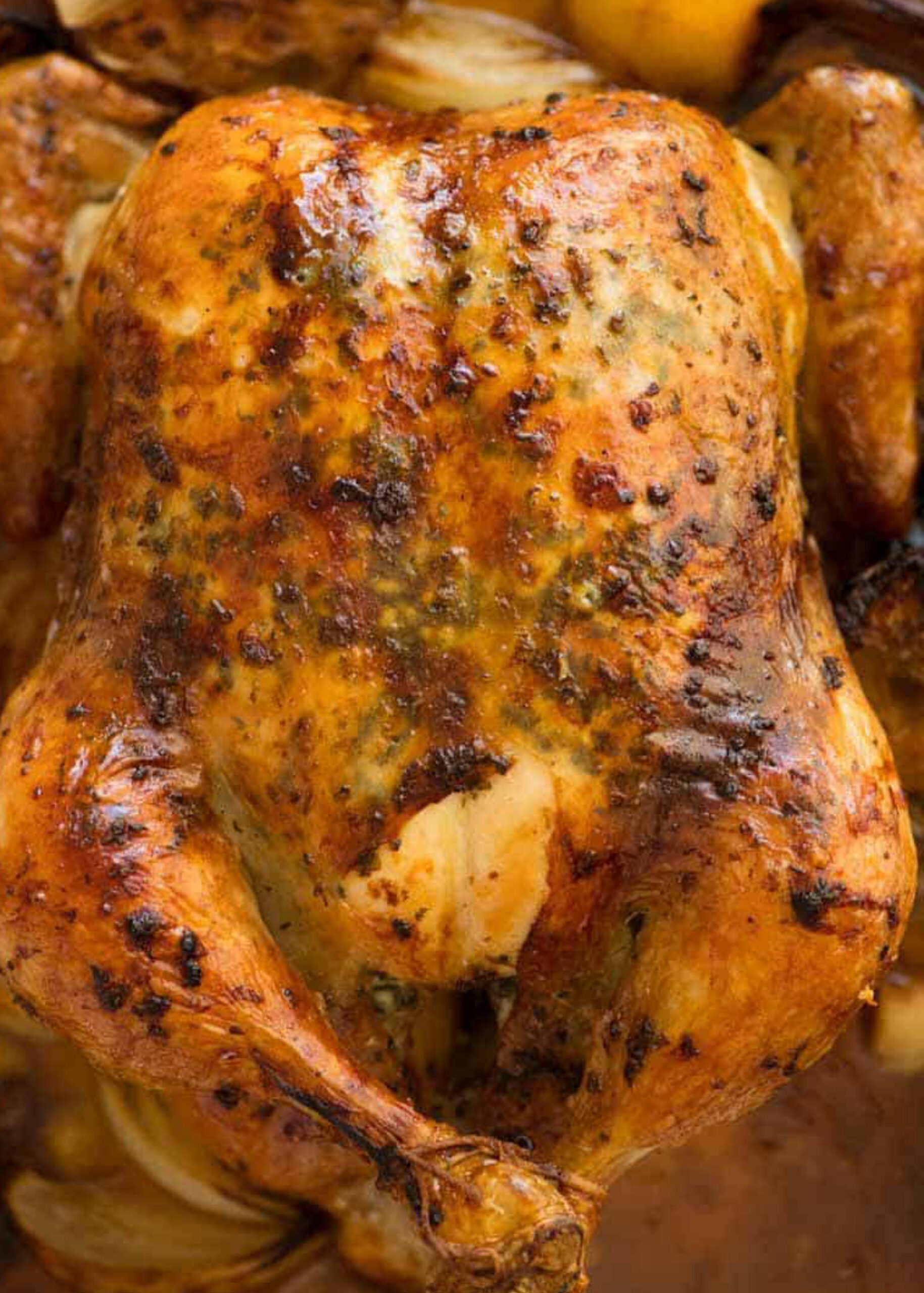
TIPS:
– To add flavor, stuff the chicken cavity with herbs, lemon, garlic, or onion before roasting.
– Baste the chicken with the pan juices halfway through cooking to keep it moist.
– For a crispy skin, increase the oven temperature to 450°F (232°C) for the last 10-15 minutes of cooking.
– Leftover roast chicken can be used in sandwiches, salads, soups, or casseroles.
Nutritional Information:
A 3.5-ounce (100-gram) serving of roasted chicken without skin provides about 165 calories, 31 grams of protein, and 3.6 grams of fat. The skin adds extra calories and fat, so it’s recommended to remove it before eating. Chicken is also a good source of vitamins and minerals such as niacin, selenium, and phosphorus.
HERE ARE SOME ADDITIONAL NOTES ON ROAST CHICKEN:
– Roast chicken can be flavored with a variety of herbs and spices, such as paprika, cumin, oregano, or sage, depending on personal preferences.
– To ensure even cooking, it’s important to truss the chicken (tie the legs together) before roasting.
– To check if the chicken is cooked through, insert a meat thermometer into the thickest part of the meat (without touching the bone). The temperature should read 165°F (74°C) for the chicken to be safe to eat.
– Roasting chicken at high heat (such as 425°F/218°C) helps to create a crispy skin and juicy meat.
– Leftover roast chicken can be stored in the refrigerator for up to four days, or in the freezer for up to three months. Make sure to store it in an airtight container or freezer bag.
– Roast chicken can be served with a variety of sides, such as roasted vegetables, mashed potatoes, or a salad.
– Roast chicken is a versatile dish that can be adapted to different cuisines and flavors. For example, you can add soy sauce and ginger for an Asian twist, or use harissa and cumin for a Middle Eastern flavor.
